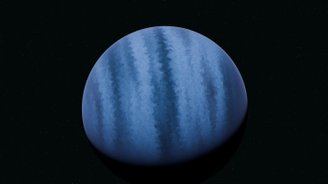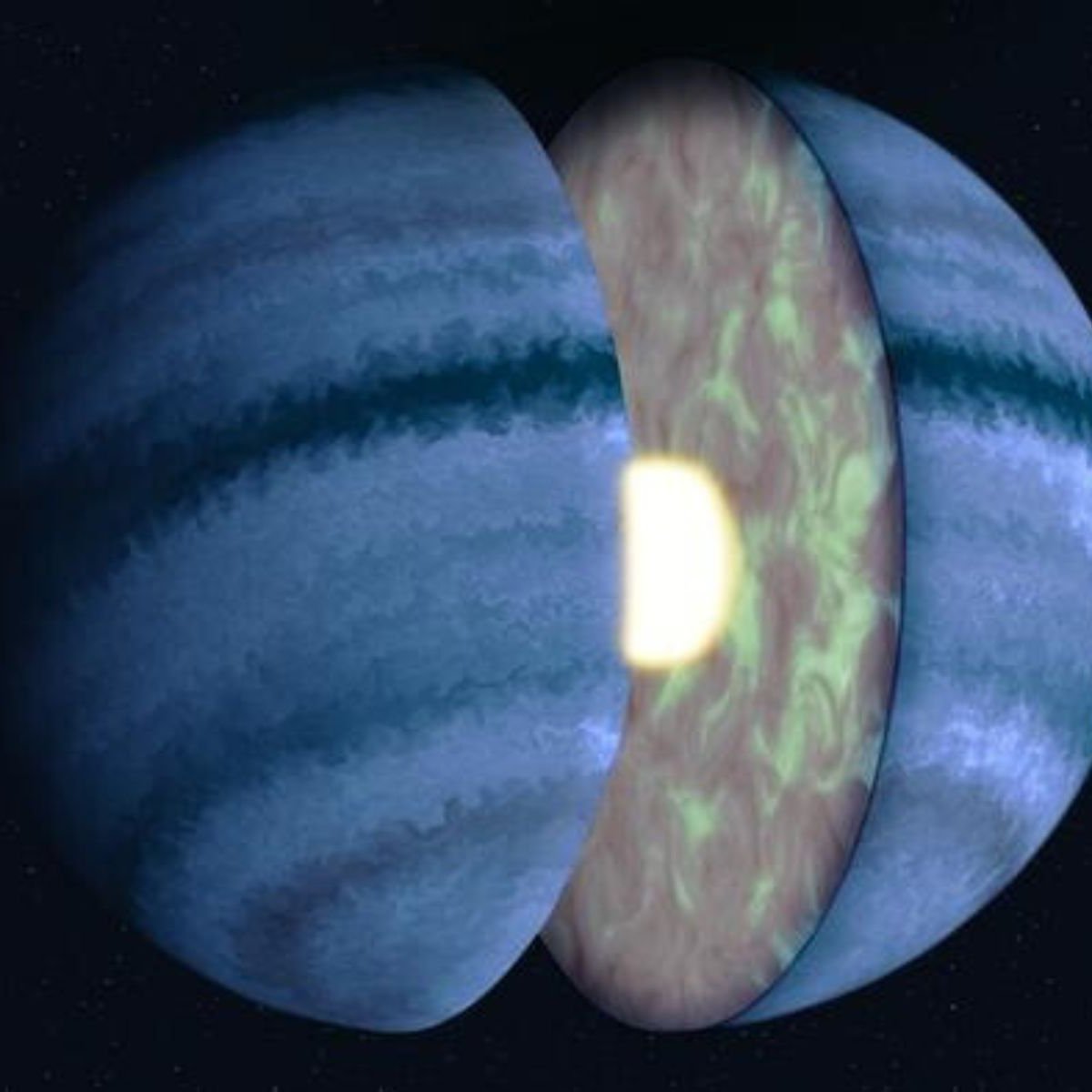Two studies recently published in the journal Nature uncover the mysteries of WASP-107b, an exoplanet that has captured the imagination of astrophysicists since its discovery in 2018 by the Wide Angle Search for Planets (WASP) project. According to participating telescopes, 107b is a hot Neptune. A world similar to the gas giants in our Solar System but orbiting close to its star.
“Why is WASP-107b so cute?” To answer the question, the authors of both studies received powerful “help” from the James Webb Space Telescope, whose observations were combined with observations from NASA’s Hubble Space Telescope. The first discovery was the presence of very low amounts of methane (CH4) in the planet’s atmosphere.
According to the team behind the initial study, led by Luis Welbanks of Arizona State University (ASU), this lack of gas indicates that: The exoplanet’s interior should be “significantly hotter and the core much larger than previously thought.”
WASP-107b exoplanet issue
The big question about WASP-107b is understanding how an exoplanet with a volume more than three-quarters the size of “our” Jupiter managed to have a mass only one-tenth the mass of the Solar System’s gas giant. In other words, how could such a small core absorb so much gas and then stop turning into Jupiter? – asks Welbanks.
Combining observations from the NIRCam and MIRI infrared cameras (from JWST) and the WFC3 wide-field camera (from Hubble), the researchers created a spectrum of light that can detect and measure the presence of objects. molecules such as water vapor (H2O), methane (CH4), carbon dioxide (CO2), carbon monoxide (CO), sulfur dioxide (SO2) and ammonia (NH3)).
According to the research, these findings show that: The exoplanet’s internal heating is mainly due to tidal heating produced by its eccentric orbit. This process may affect the atmospheric chemistry and internal structure of other exoplanets that are considered cold (less than 730 °C). Studying these unusual properties of WASP-107b opens the understanding of exoplanets.
First look inside an exoplanet
If the study conducted by ASU researchers focuses on WASP-107b’s massive core and high internal heat flux, the study conducted by Johns Hopkins University staff focuses on widespread methane depletion in the planet’s atmosphere and its supermassive core. What makes an exoplanet look like cotton candy?.

Peering into the interior of a planet hundreds of light-years away may seem like a nearly impossible task, but “once you know its mass, radius, atmospheric composition, and temperature of its interior, you have all the information,” says the first author of the second study. “Parts were needed to get an idea of what was inside and how heavy this core was,” says David Sing of Johns Hopkins in a press release.
By taking advantage of the first look at an exoplanet’s interior offered by JWST, the study’s authors were able to discover “important pieces of the puzzle of how planetary atmospheres behave in extreme conditions,” Sing said. On behalf of research co-chair Zafar Rustamkulov, This difference between the planet’s extreme size and its actual size is due to tidal heating..
In this sense, the high heat source from the planet’s core changes the chemical composition of gases in the deepest layers of WASP-107b, but also increases convection, which transfers heat from the core to the surface. Rustamkulov concludes that this heat “may specifically destroy methane and produce large amounts of CO2 and CO.”
Did you like the content? If so, take the opportunity to take a look at a map created by NASA that allows you to view the outer planets in 360 degrees. And don’t forget to share the article on your social networks!
Source: Tec Mundo
I’m Blaine Morgan, an experienced journalist and writer with over 8 years of experience in the tech industry. My expertise lies in writing about technology news and trends, covering everything from cutting-edge gadgets to emerging software developments. I’ve written for several leading publications including Gadget Onus where I am an author.













